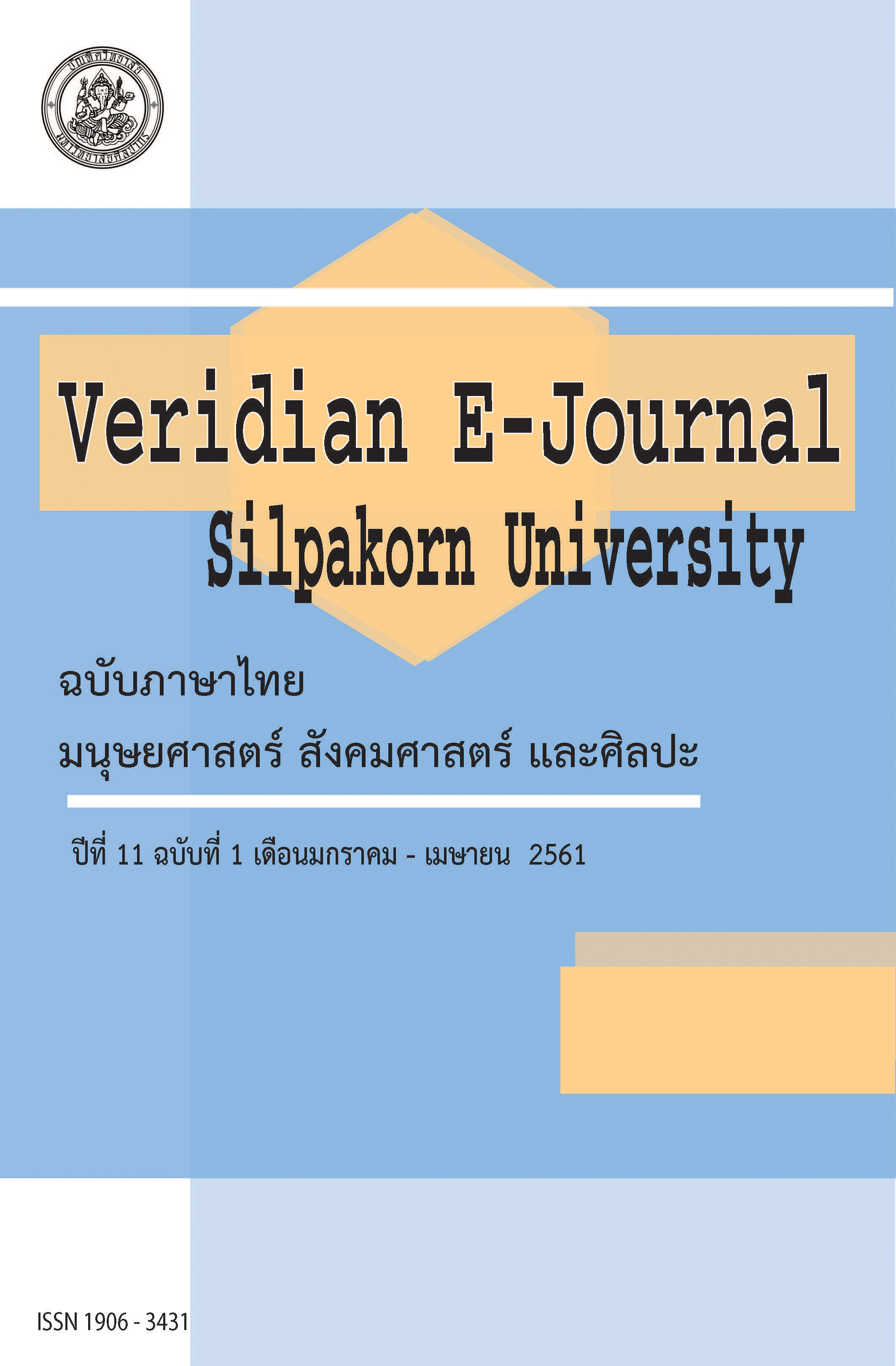การประเมินความต้องการจำเป็นในการพัฒนาการคิดอย่างมีวิจารณญาณ ในการเรียนรู้ศิลปะสมัยใหม่และร่วมสมัยของไทยในพิพิธภัณฑ์ศิลปะ (Needs assessment of critical thinking development in Thai modern and contemporary art learning in art museums.)
Main Article Content
บทคัดย่อ
การวิจัยครั้งนี้มีวัตถุประสงค์เพื่อ 1) ศึกษาสภาพปัจจุบันและสภาพที่พึงประสงค์ของการพัฒนาการคิดอย่างมีวิจารณญาณในการเรียนรู้ศิลปะสมัยใหม่และร่วมสมัยของไทยในพิพิธภัณฑ์ศิลปะ 2) จัดลำดับความต้องการจำเป็นในการพัฒนาการคิดอย่างมีวิจารณญาณในการเรียนรู้ศิลปะสมัยใหม่และร่วมสมัยของไทยในพิพิธภัณฑ์ศิลปะ 3) ศึกษาความคิดเห็นของครูทัศนศิลป์ต่อการเรียนรู้ศิลปะสมัยใหม่และร่วมสมัยของไทยในพิพิธภัณฑ์ศิลปะ กลุ่มตัวอย่างคือ ครูทัศนศิลป์ระดับมัธยมศึกษา ในสังกัดสำนักงานคณะกรรมการการศึกษาขั้นพื้นฐาน และในสังกัดสำนักงานคณะกรรมการการอุดมศึกษา (สกอ.) จำนวน 366 คน เครื่องมือที่ใช้ในการวิจัยคือ แบบสอบถาม วิเคราะห์ข้อมูลโดยใช้การความถี่ ร้อยละ ค่าเฉลี่ย ส่วนเบี่ยงเบนมาตรฐาน ค่าดัชนีความต้องการจำเป็น (PNIModified) และการวิเคราะห์เนื้อหา
ผลการวิจัยพบว่า 1) สภาพปัจจุบันของการพัฒนาการคิดอย่างมีวิจารณญาณในการเรียนรู้ศิลปะส่วนใหญ่มีค่าเฉลี่ยในระดับปานกลาง เมื่อพิจารณาในแต่ละด้านพบว่า ด้านที่มีค่าเฉลี่ยสูงสุดคือ ด้านการจัดการเรียนการสอนเรียนรู้ศิลปะ รองลงมาคือ ด้านการวัดและประเมินผลการเรียนรู้ศิลปะ ส่วนสภาพที่พึงประสงค์มีค่าเฉลี่ยในระดับมาก โดยด้านที่มีค่าเฉลี่ยสูงสุดคือ ด้านการจัดการเรียนการสอนเรียนรู้ศิลปะ รองลงมาคือ ด้านการวัดและประเมินผลการเรียนรู้ศิลปะ 2) ผลการจัดลำดับความต้องการจำเป็นในการพัฒนาการคิดอย่างมีวิจารณญาณในการเรียนรู้ศิลปะสมัยใหม่และร่วมสมัยของไทยในพิพิธภัณฑ์ศิลปะพบว่า ด้านที่มีค่าดัชนีความต้องการจำเป็นสูงสุดคือ ด้านการจัดการเรียนรู้ในพิพิธภัณฑ์ศิลปะ รองลงมาคือ ด้านจุดมุ่งหมายในการจัดการเรียนรู้ และด้านคุณลักษณะของนักเรียน 3) ผลการวิเคราะห์ความคิดเห็นของครูทัศนศิลป์ ด้านประโยชน์และความจำเป็นของพิพิธภัณฑ์ศิลปะคือ การเรียนรู้ในพิพิธภัณฑ์ศิลปะทำให้ผู้เรียนได้รับประสบการณ์ตรงจากผลงานศิลปะที่จัดแสดง ด้านปัญหาและอุปสรรคคือ พิพิธภัณฑ์ศิลปะยังขาดการบริการด้านการศึกษาให้แก่ผู้เข้าชม และครูได้ให้ข้อเสนอแนะเพิ่มเติมว่า ควรเชื่อมโยงการเรียนรู้ในระบบโรงเรียนกับแหล่งการเรียนรู้ตลอดชีวิต
The purposes of this research were as follows: 1) to assess current and expected conditions of critical thinking development in Thai modern and contemporary art learning in art museums; 2) to rank the needs of critical thinking development in Thai modern and contemporary art learning in art museums; and 3) to study art teachers’ opinions about Thai modern and contemporary art learning in art museums. The participants of this study included 366 teachers teaching visual art in secondary schools under the supervision of the Office of the Basic Education Commission (OBEC) and the Office of the Higher Education Commission (OHEC). The research data were collected by questionnaire and then analyzed by frequency, percentage, mean, standard deviation, setting priority in terms of needs using Modified Priority Needs Index, and content analysis.
The results were summarized as follow;
1) The actual state of critical thinking development in Thai modern and contemporary art learning in art museums in terms of the overall characteristics were practiced at the medium level. Considering each characteristic, it was found that the highest mean score is art learning management, followed by art learning measurement and evaluation. The desirable state of critical thinking development in Thai modern and contemporary art learning in art museums in terms of the overall characteristics were practiced at the high level. Considering each characteristic, it was found that the highest mean score is art learning management, followed by art learning measurement and evaluation. 2) The priority needs of critical thinking development in Thai modern and contemporary art learning in art museums found that the highest index was learning management in art museums, followed by objectives in learning management and characteristics of students. 3) Art teachers’ opinions about the benefits of art museums were museums offered direct experiences for students to learn with exhibition objects, the problems and obstacles to learning in art museums were museums did not have educational services, and art teachers had more suggestions that should link formal education system with the sources of lifelong learning.

